Happy with Windows 10? Here’s how to stop the Windows 11 updateAre you fed up being nagged to upgrade? Here’s how to muzzle it.By Palash Volvoikar•4 hours ago
Windows has had a bit of an update problem of late, where it offers free updates and even unwilling users have to face the prompts. Are you happy with Windows 10 and don’t want to upgrade to Windows 11? Here’s how to refuse the Windows 11 update.
To refuse the Windows 11 update, you can pause updates in Settings -> Update & Security -> Advanced options -> Pause updates. Alternatively, you can disable the service in the Windows services app, or edit the registry entries to disable Windows Update.
How to stop Windows 11 automatic updates temporarily in Settings
Windows 10 will let you temporarily stop Windows 11 automatic updates in the Settings. Open up the Settings app by pressing Windows key + I, or via Windows search.
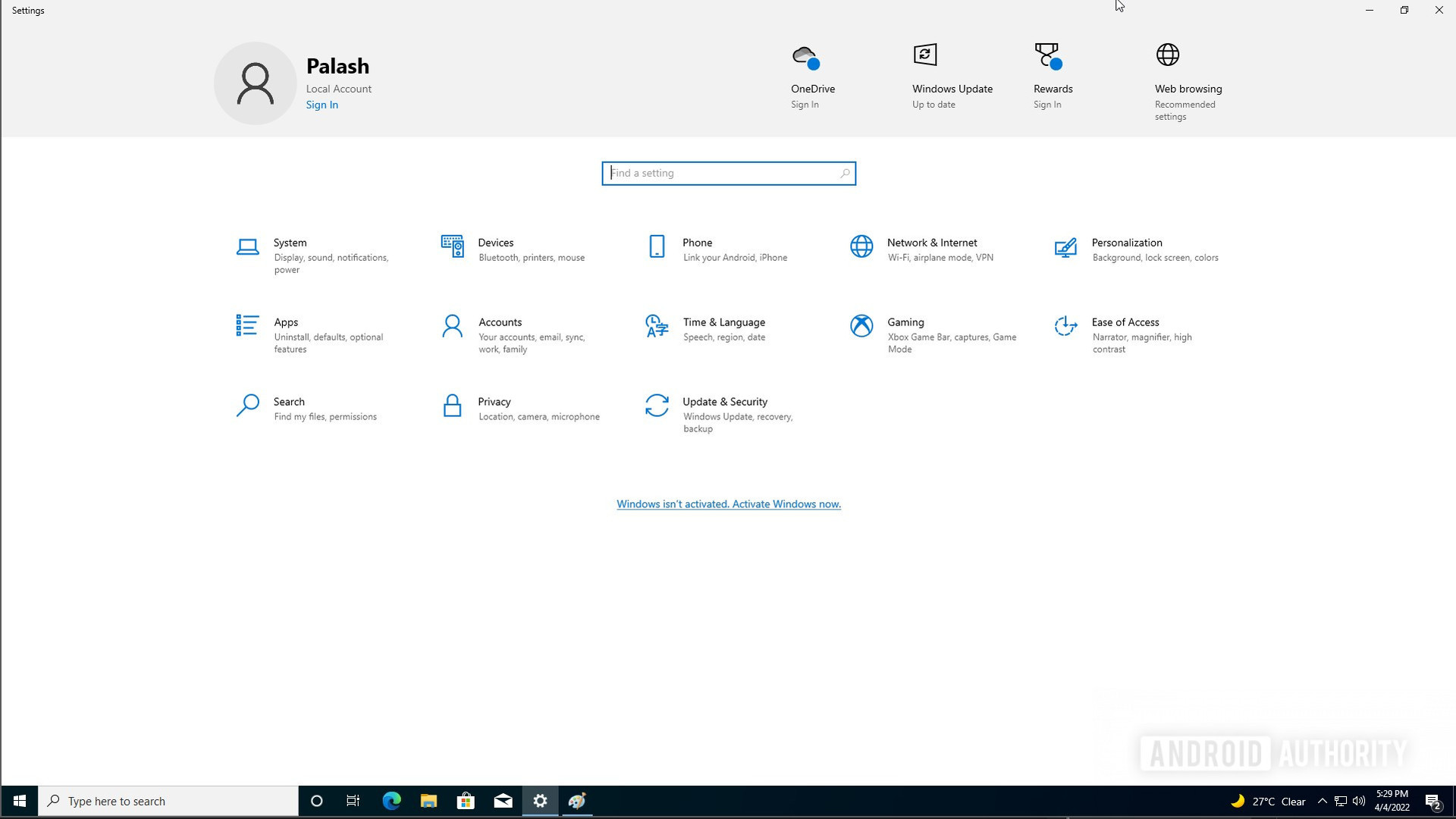
Click Update & Security. If you want to quickly pause the Windows 11 update for a few days, you can click Pause updates for 7 more days.
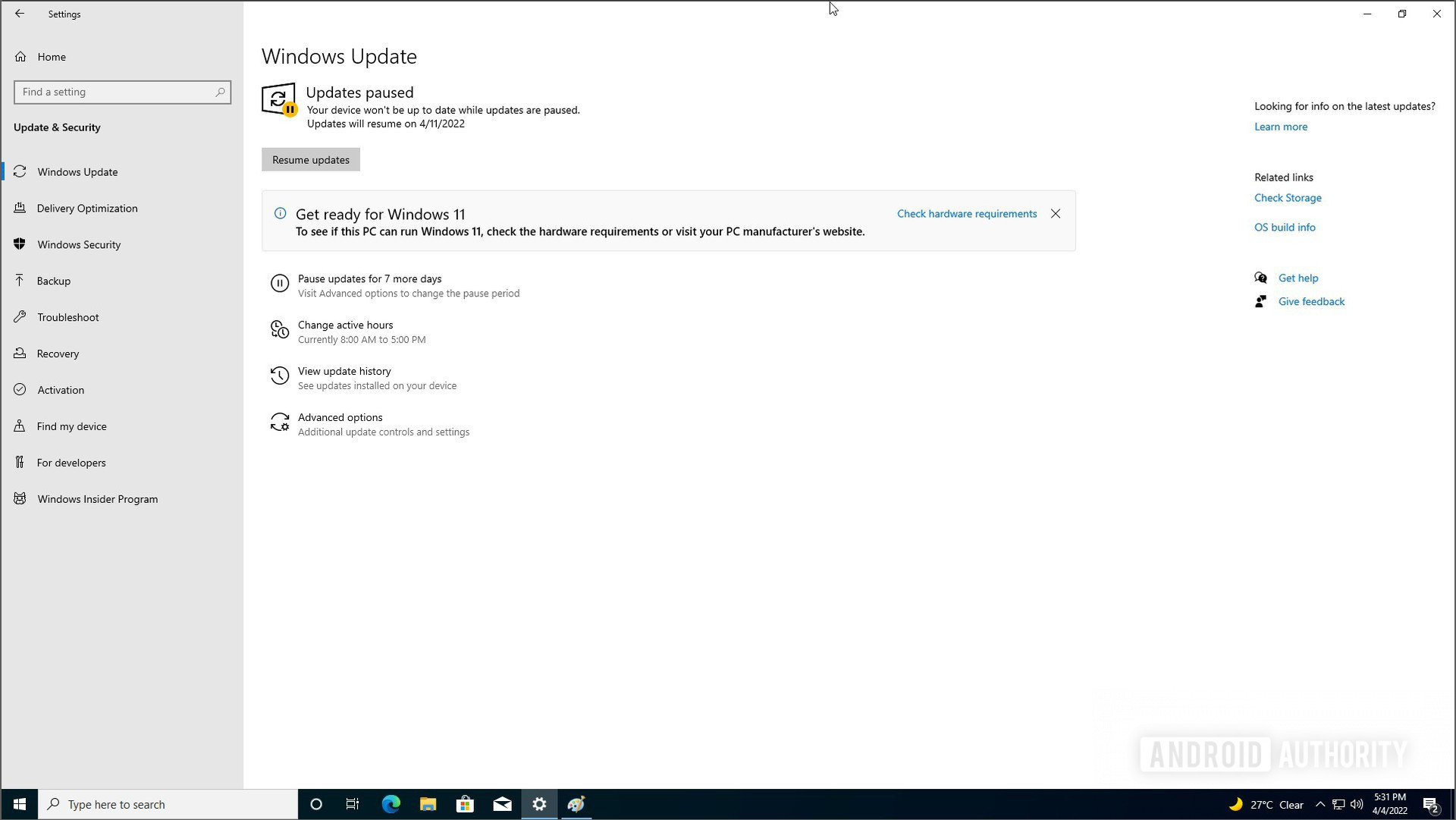
If you want a little more room, click Advanced options.
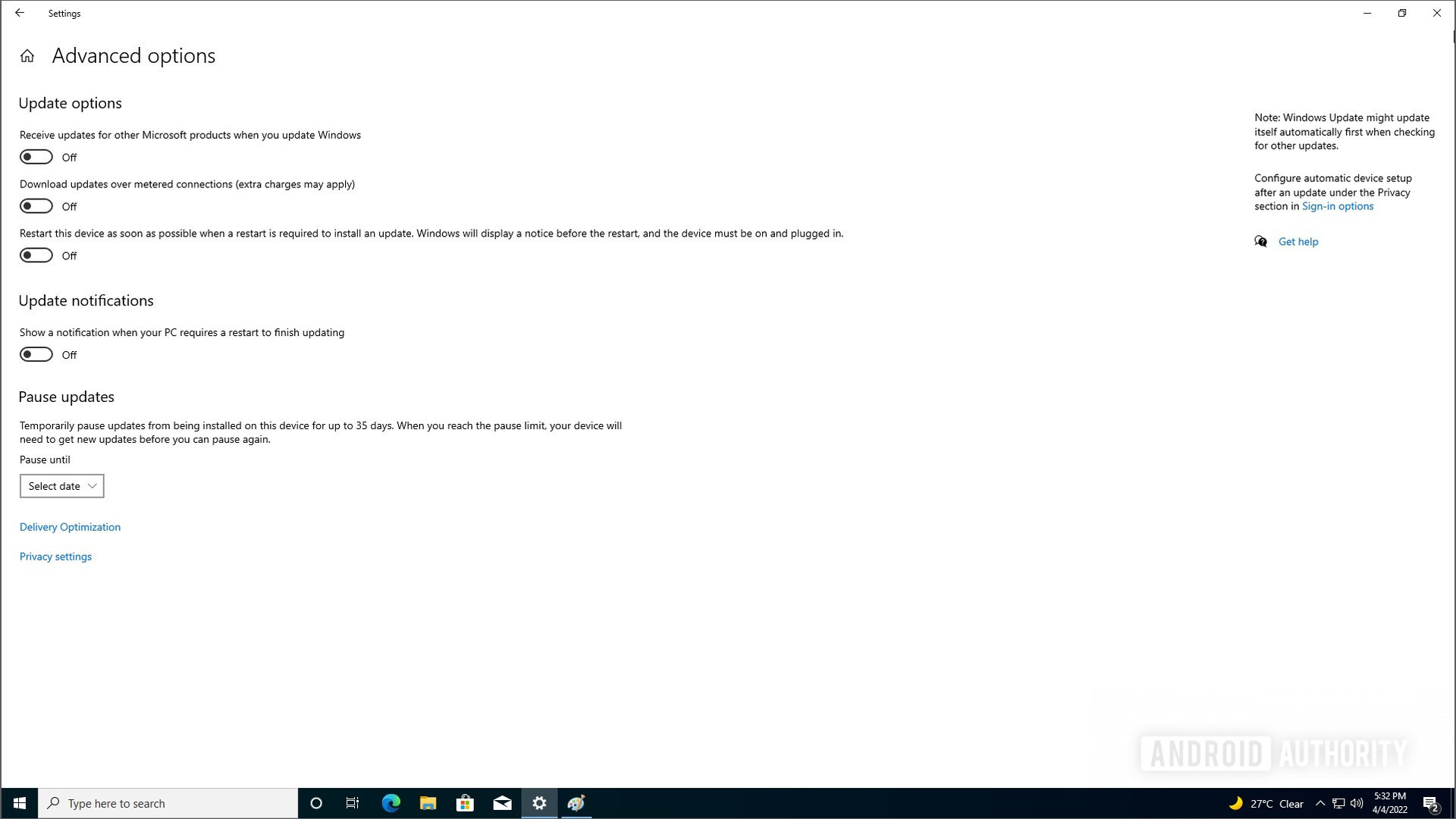
Under Pause updates, click the Select date dropdown menu, and select the date until you want to pause the updates.
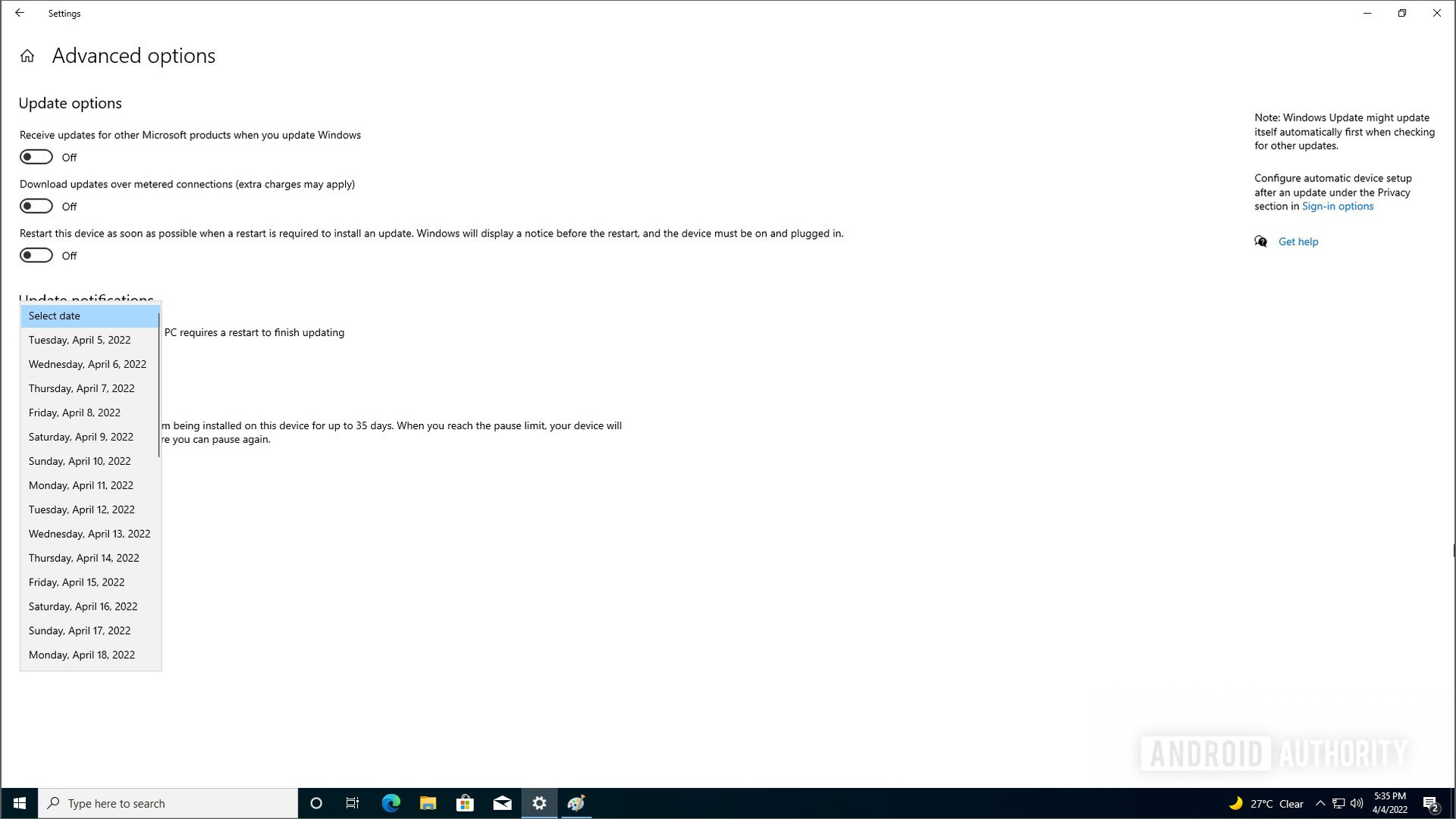
Disable Windows 11 automatic updates via Windows services
If you want a more concrete solution that will stop Windows from nagging you to update to Windows 11, you can disable the update service.
Click Windows key + R to bring up the Run dialog. Type in services.mscand click OK or hit the enter key.
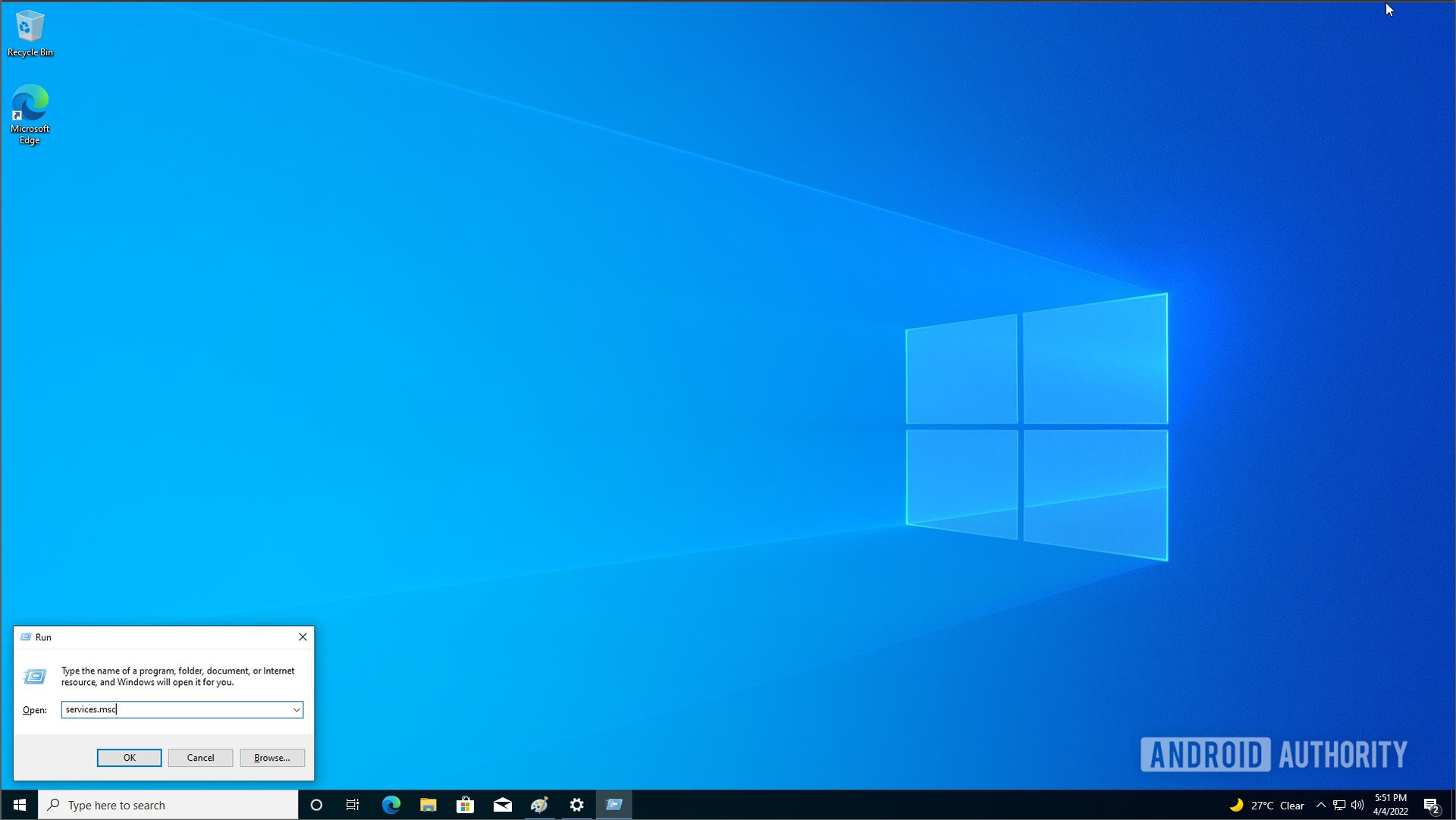
Scroll down in the right pane in the Services window, locate Windows Update, and double-click it.
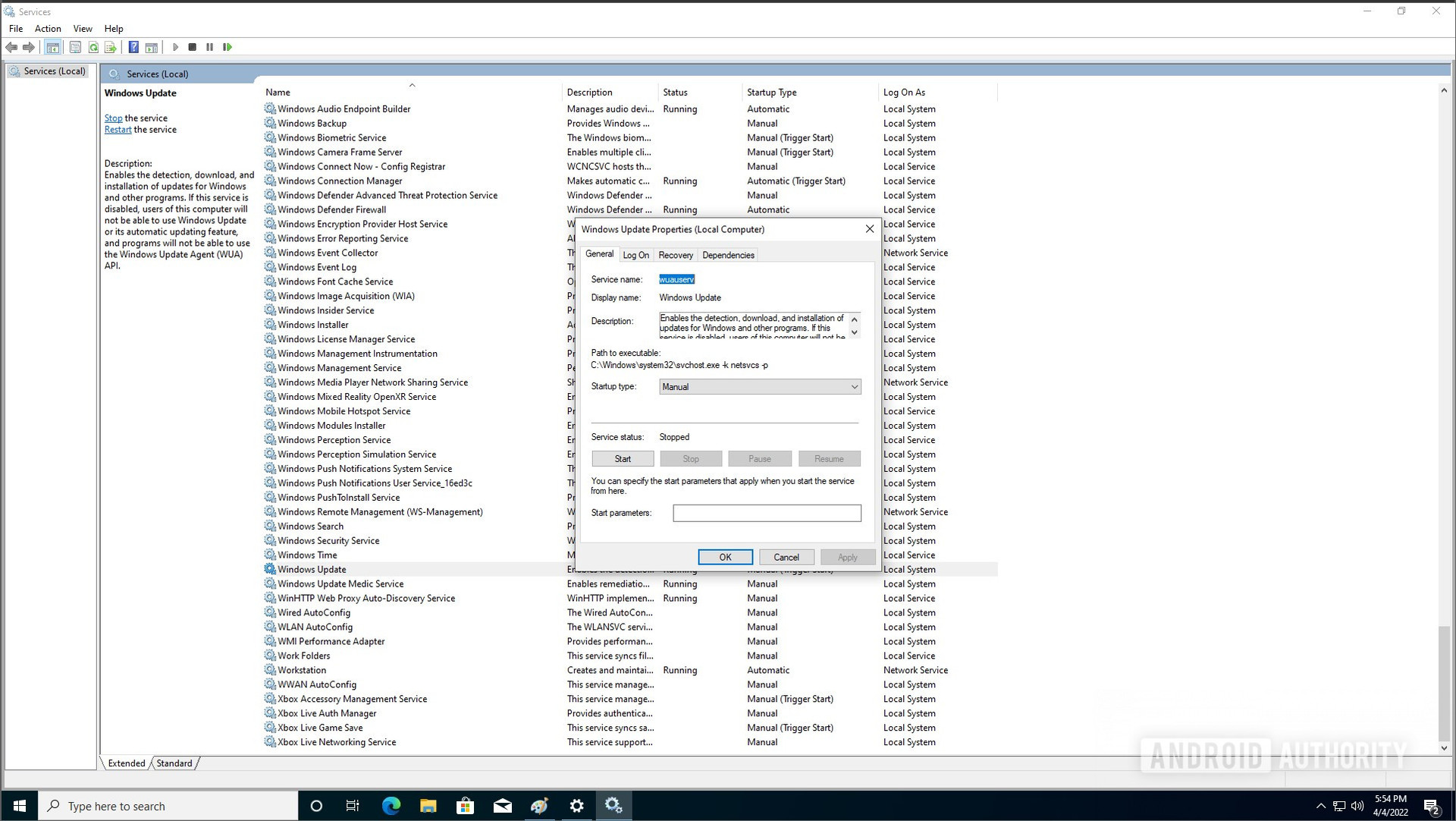
Click the dropdown menu next to Startup type that says Manual, and click Disabled. Then click the Stop button under Service status, if the status says Running.
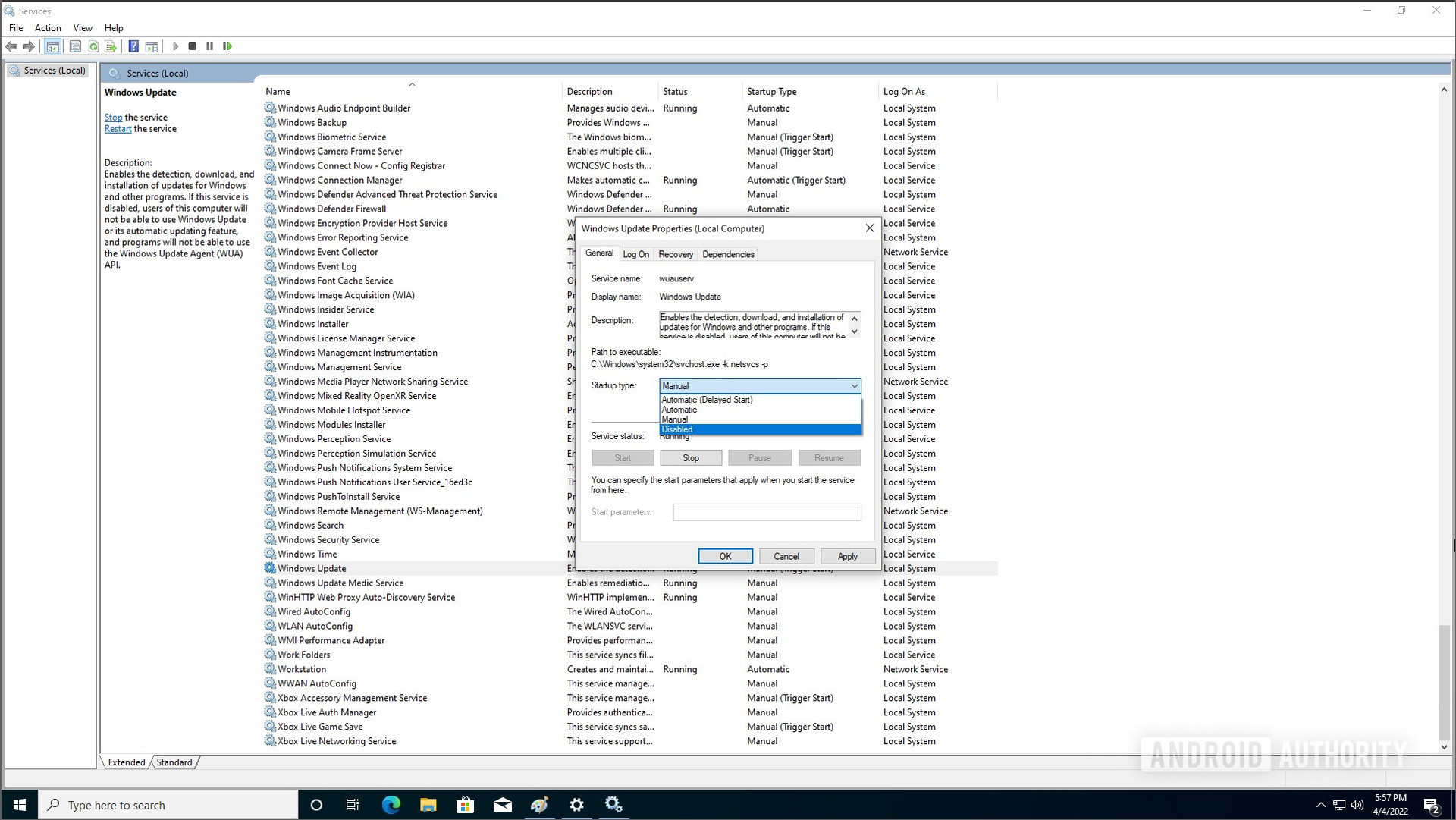
Click OK to save. That should kill the Windows Update service and stop it from starting automatically.
How to turn off Windows 11 automatic updates via a registry edit
Using the Registry Editor is an even more concrete method, but it can also potentially mess up your system, so proceed with caution. Only use this method if the first two aren’t working as expected.
Before you begin, check your version of Windows 10. Launch the Settings app by pressing Windows key + I, or look for it in Windows search. Click System and About in the left navigation pane. Note the figure next to Version, under Windows specifications. In our case, it’s 21H2.
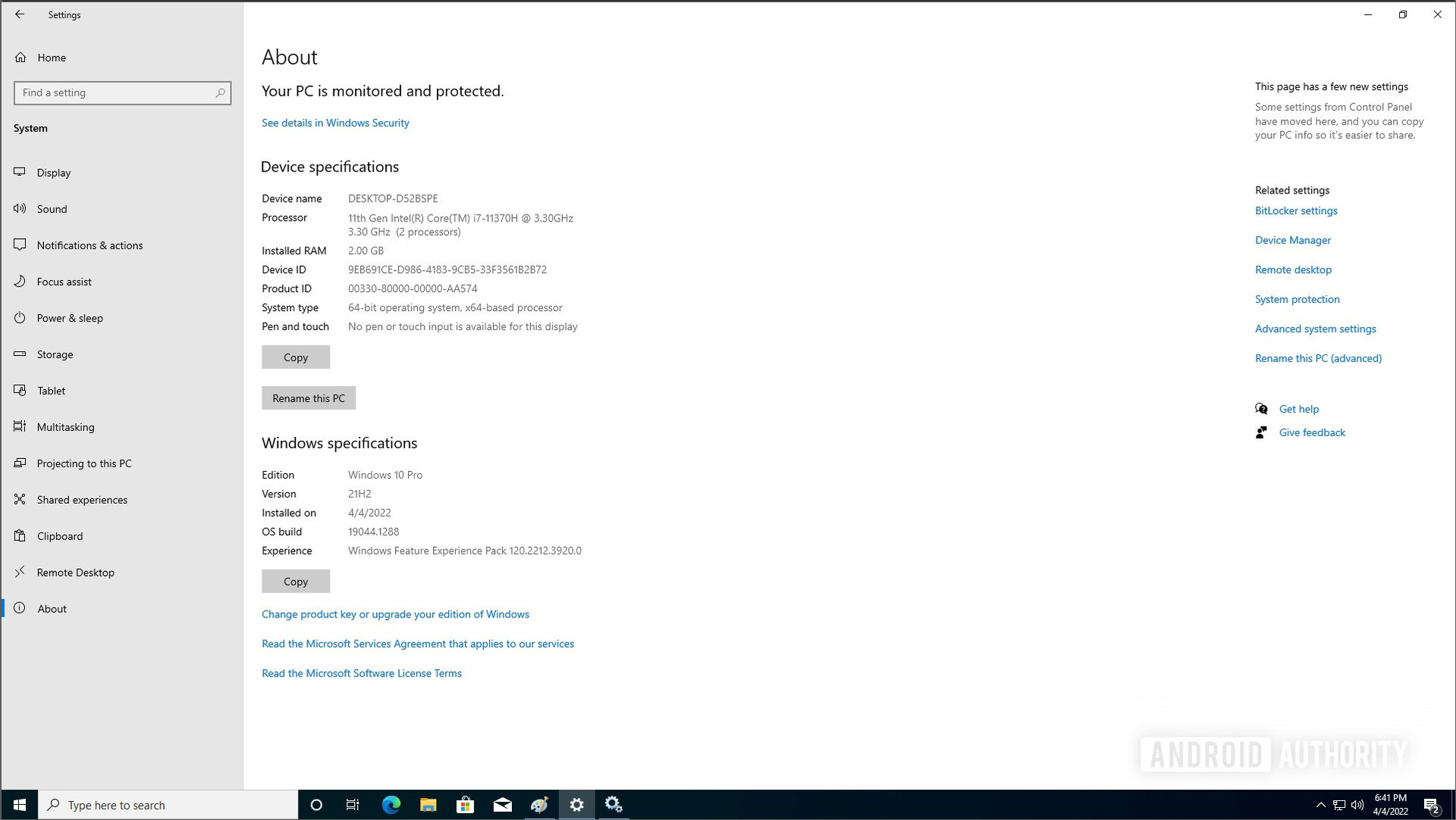
Next, launch the Registry Editor. Press Windows key + R to summon the Run dialog, typeregedit and hit Enter or click OK. Click Yes if the User Account Control prompt shows up.
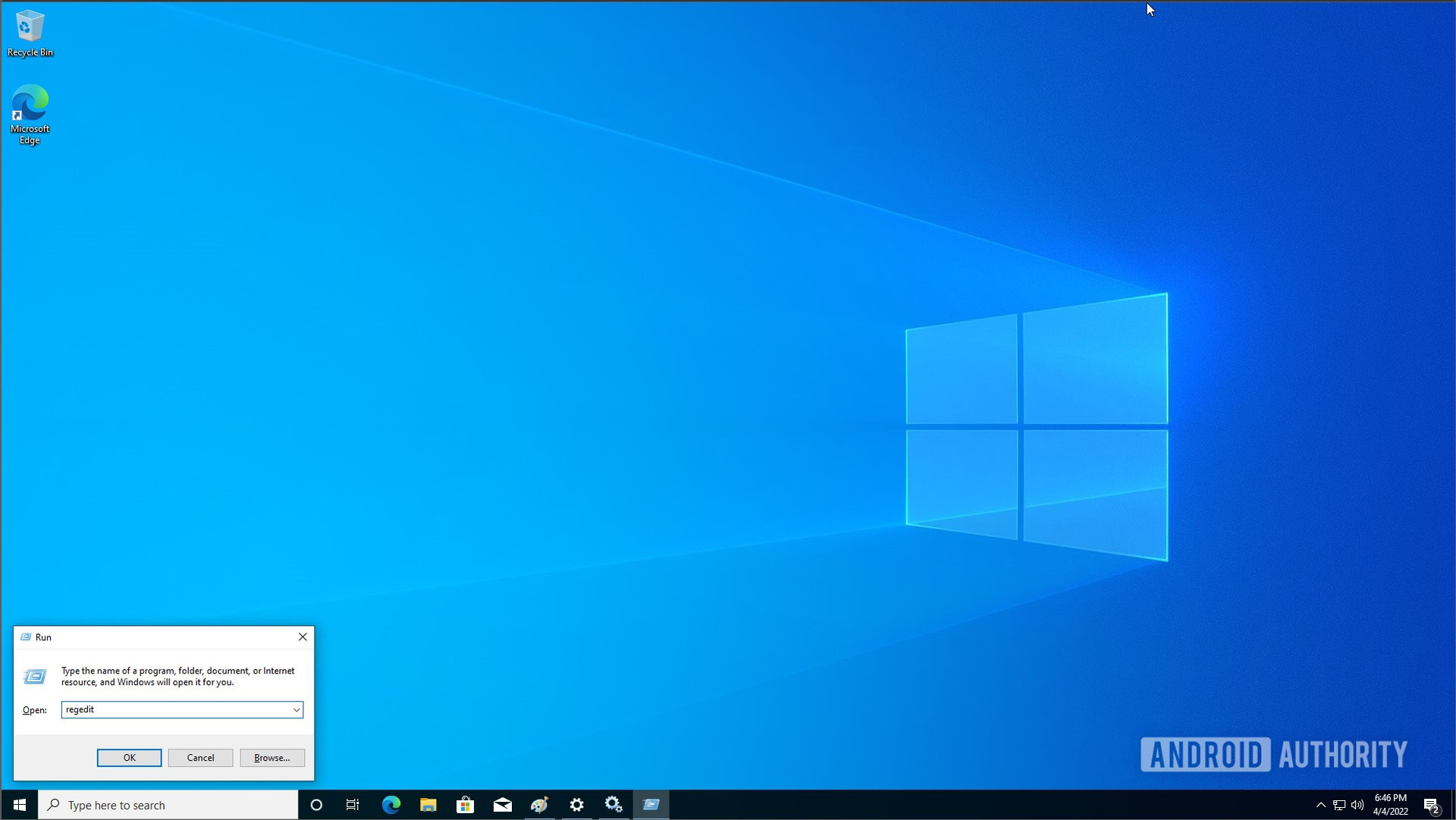
In the left pane, click the expand arrow to the folder’s left to navigate to the following path.
ComputerHKEY_LOCAL_MACHINESOFTWAREPoliciesMicrosoftWindowsWindowsUpdate
If the WindowsUpdate folder is missing, you’ll have to create it. Right-click the Windows folder -> New -> Key. Rename the new key by typing in WindowsUpdate, and hitting Enter.
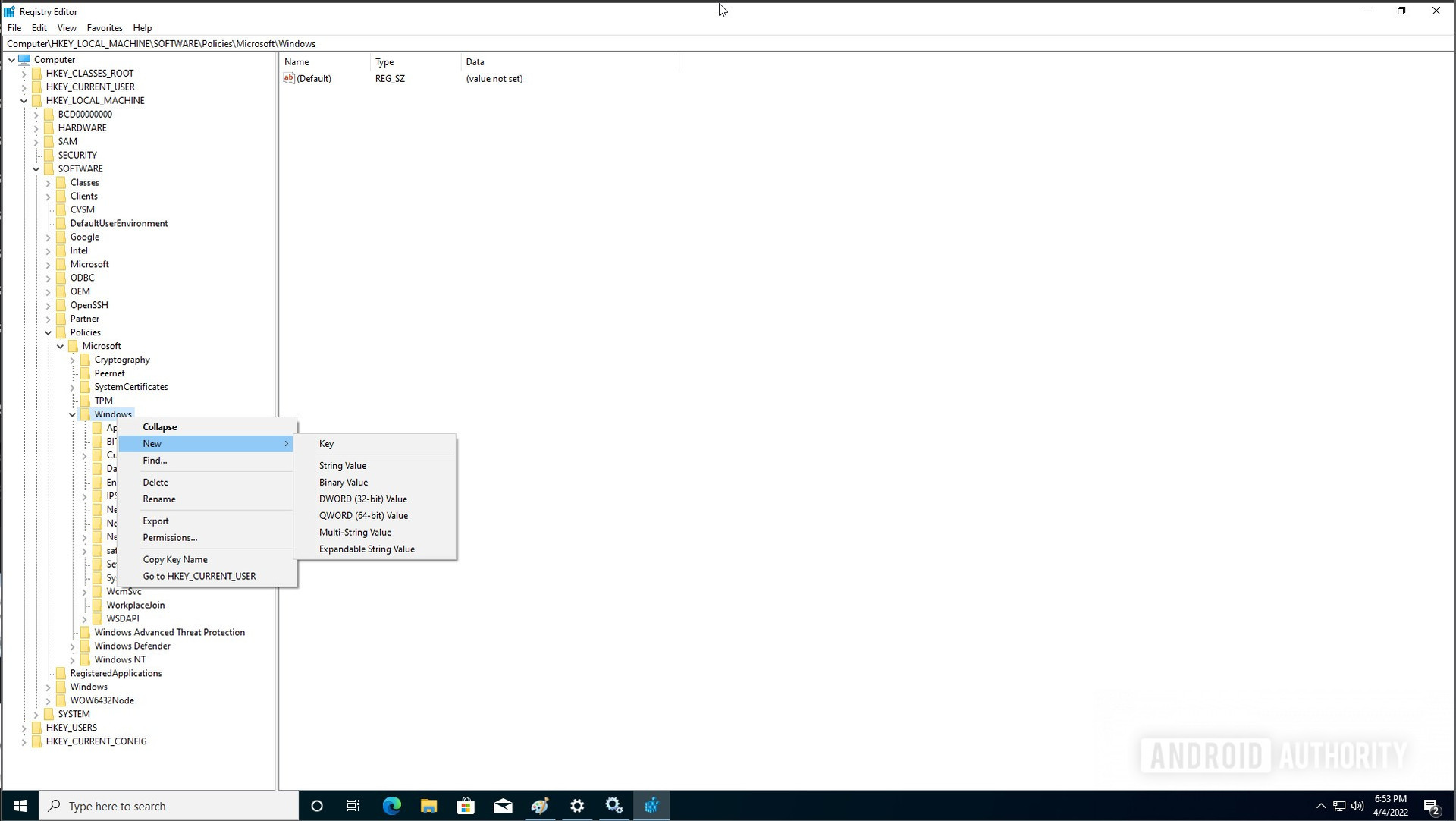
Double-click WindowsUpdate in the left pane and right-click in the right pane. Click New -> DWORD (32-bit) Value.
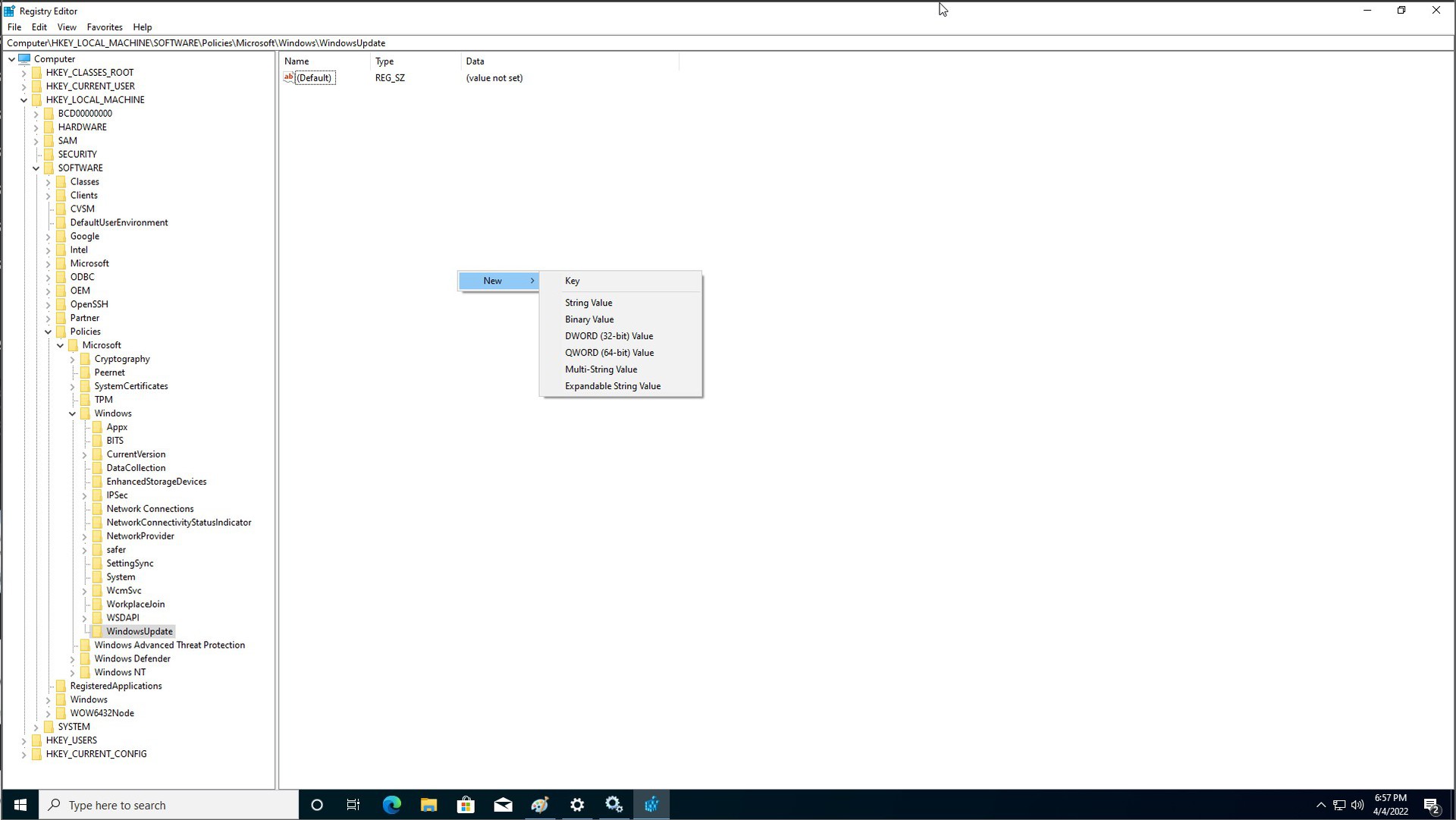
Type TargetReleaseVersion and hit enter to rename this value. Double-click the freshly renamed key to open the value editor.
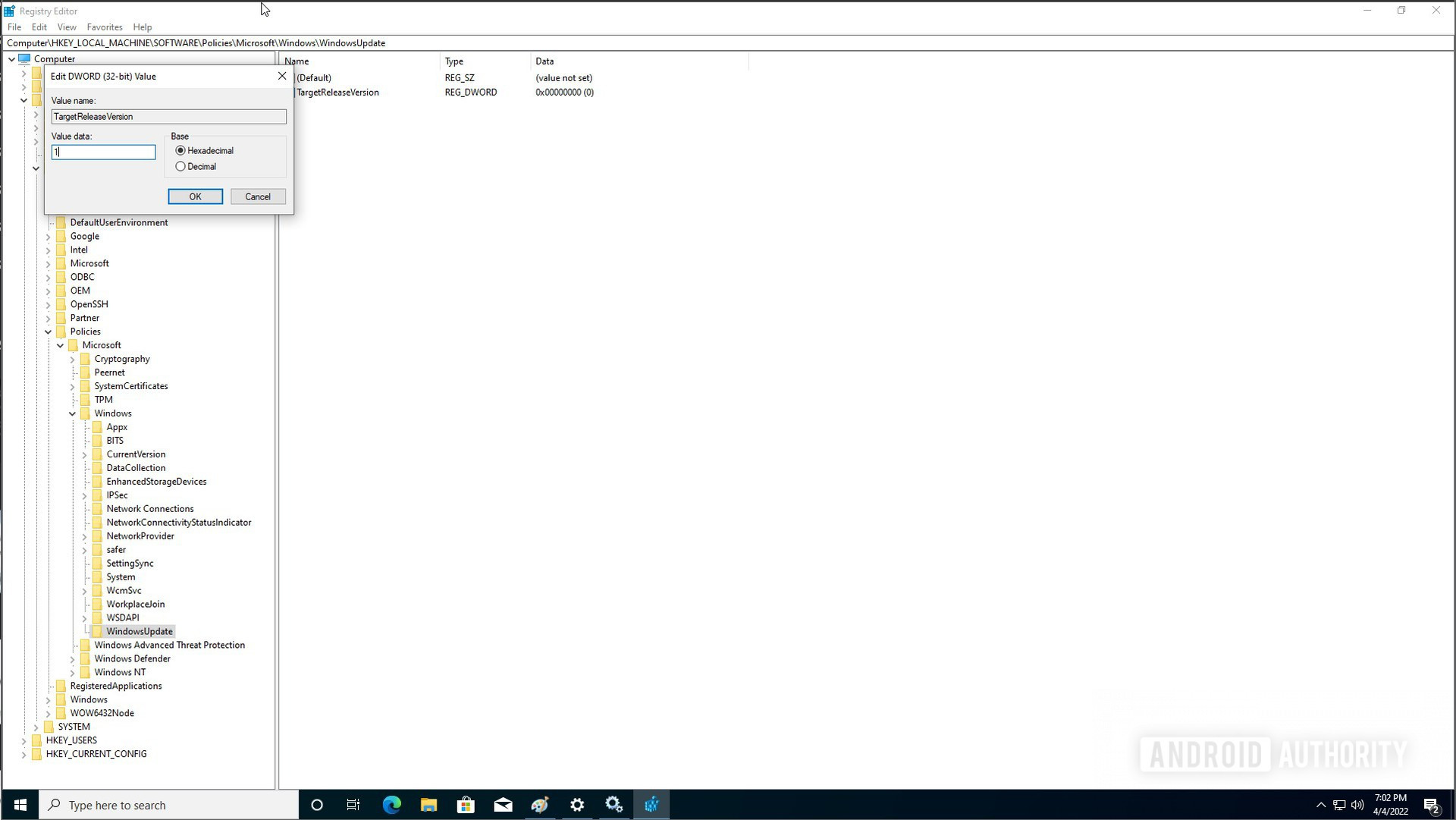
Change the Value data from 0 to 1. Click OK. Right-click on the right pane again. Click New -> String Value. Type TargetReleaseVersionInfo and hit enter to rename this value.
Double-click the freshly renamed key to open the value editor. In the Value data field, type in the Windows version name you noted earlier — 21H2 in this case. Hit OK to save it.
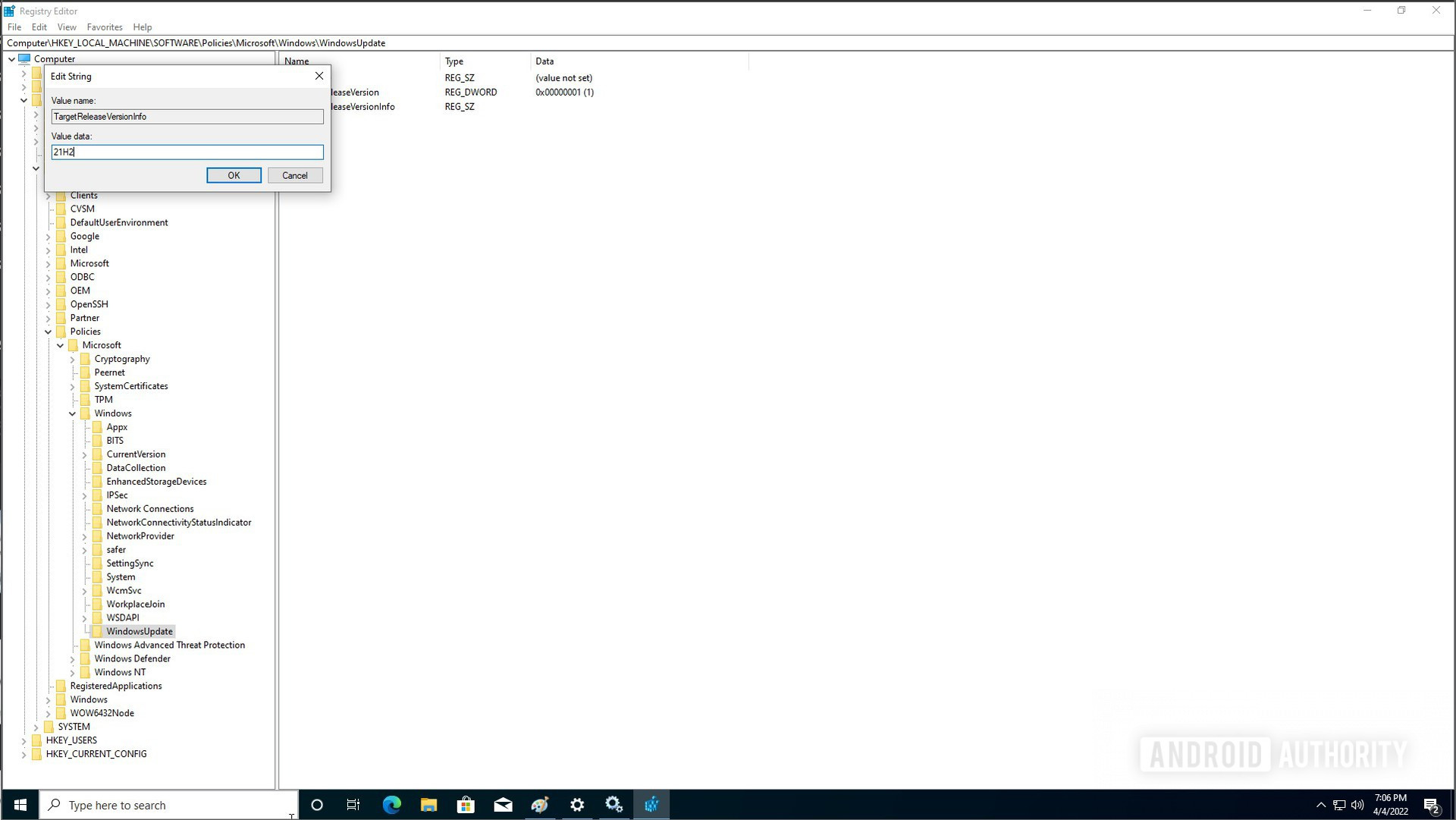
You can then close the Registry Editor. Restart your system to apply these changes, and enjoy a nag-free Windows 10.
